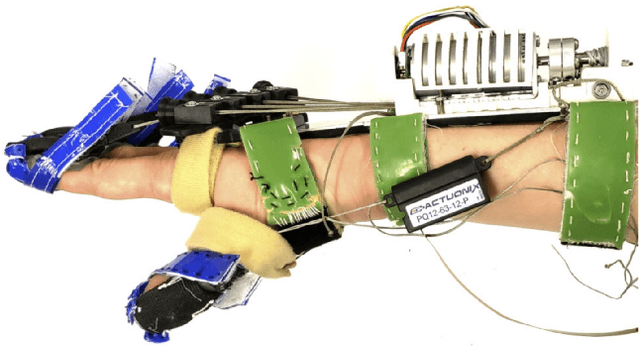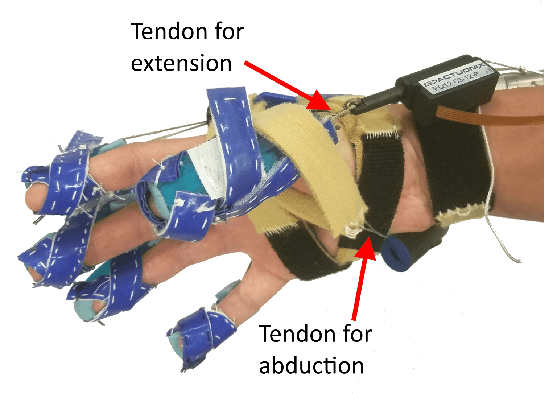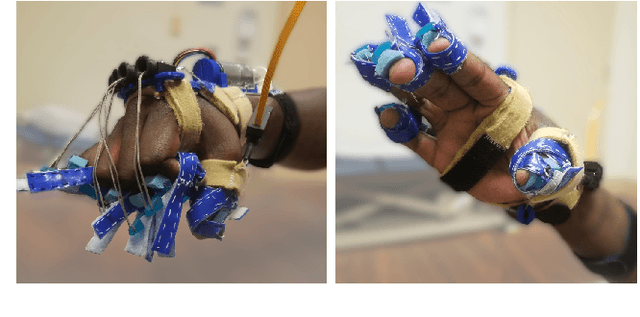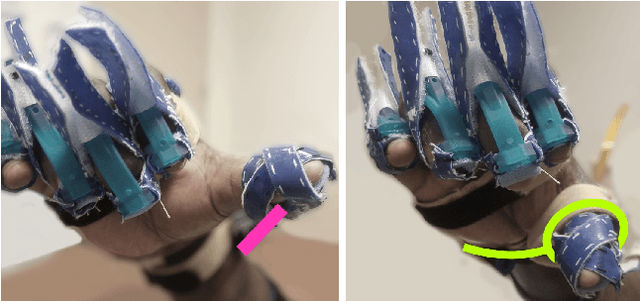Thumb Assistance Via Active and Passive Exotendons in a Robotic Hand Orthosis for Stroke
Paper and Code
Oct 05, 2021



We present a tendon-driven, active-extension thumb exoskeleton adding opposition/reposition capabilities to a robotic hand orthosis designed for individuals with chronic upper-limb hemiparesis after stroke. The orthosis uses two actuators to assist hand-opening, with one tendon network controlling simultaneous four-finger extension and one separately driving thumb extension. When combined with a passive palmar abduction constraint, the thumb network can counteract spasticity and provide stable thumb opposition for manipulating objects in a range of sizes. We performed a preliminary assessment with five chronic stroke survivors presenting with arm-hand motor deficits and increased muscle tone (spasticity). Experiments consisted of unimanual resistive-pull tasks and bimanual twisting tasks with simulated real-world objects; these explored the effects of thumb assistance on grasp stability and functional range of motion. We specifically compare functional performance of actuation against static thumb-splinting and against no device. The addition of active-extension to the thumb improves positioning ability when reaching for objects, and improves consistency and duration of maintaining stable grasps.
 Add to Chrome
Add to Chrome Add to Firefox
Add to Firefox Add to Edge
Add to Edge